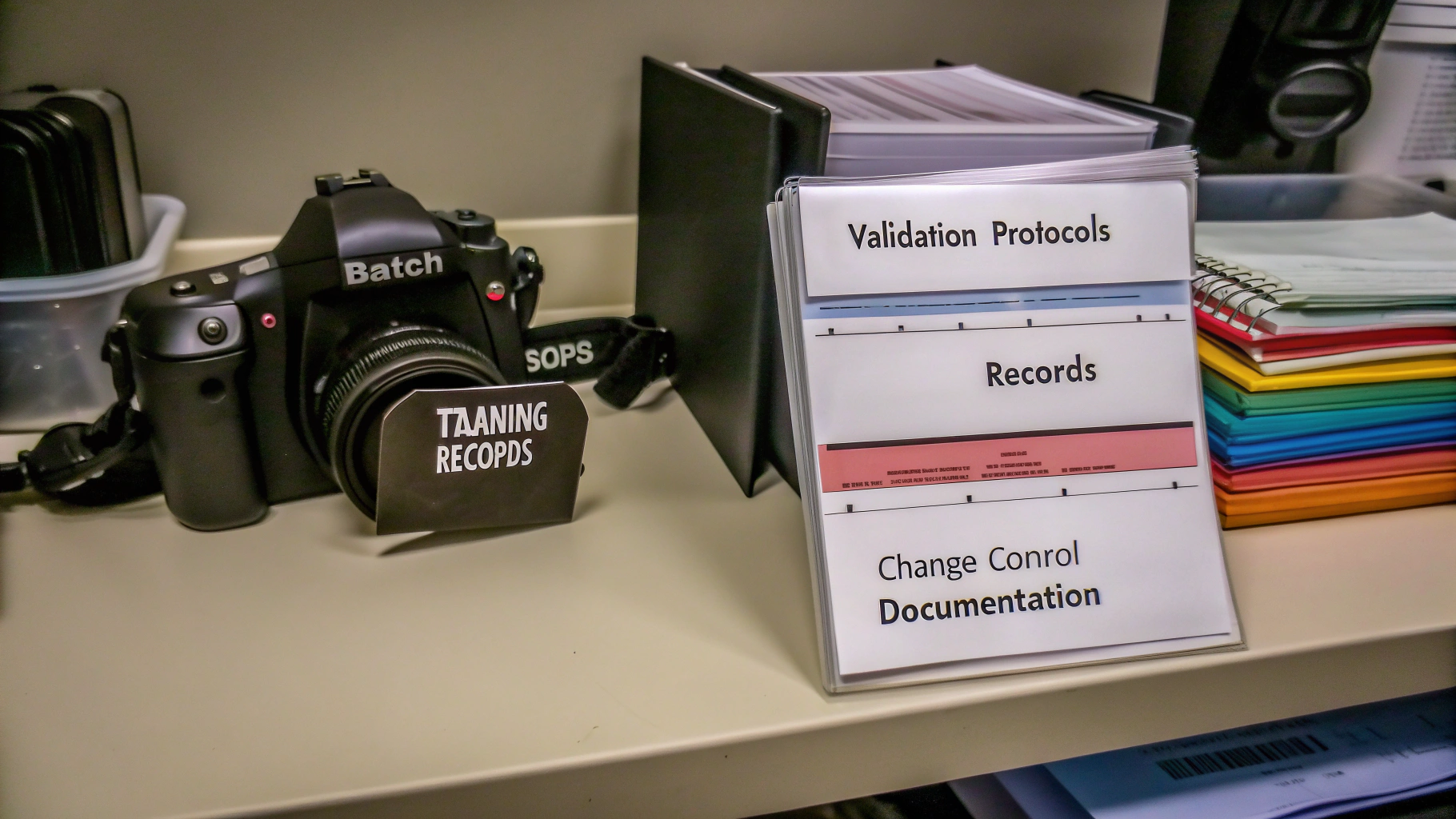Master PAI Inspection: 4 Steps for Compliance Officers

Overview
The article outlines four essential steps for compliance officers to master Pre-Approval Inspections (PAI), highlighting the critical challenges in achieving compliance. Preparation, documentation, training, and risk management are not just buzzwords; they are the cornerstones of successful inspections. Each step is supported by detailed strategies, such as gathering critical documentation, conducting mock inspections, and implementing corrective actions to mitigate compliance risks. These strategies are aimed at ensuring facilities meet FDA standards and achieve successful inspection outcomes.
By focusing on preparation, compliance officers can proactively address potential issues before they arise. Documentation plays a pivotal role in this process, serving as the backbone of compliance efforts. Training ensures that all team members are equipped with the knowledge necessary to navigate the complexities of inspections. Finally, effective risk management strategies help identify and mitigate potential compliance pitfalls.
Incorporating case studies of successful compliance projects can further illustrate the effectiveness of these strategies, showcasing real-world applications that resonate with the audience. This structured approach not only informs but also empowers compliance officers to take decisive action in their roles.
Ultimately, mastering these four steps is not just about compliance; it's about fostering a culture of excellence that prioritizes safety and quality in every aspect of operations.
Introduction
Mastering Pre-Approval Inspections (PAI) is crucial for compliance officers dedicated to maintaining the highest standards in drug manufacturing. These inspections act as a vital checkpoint, ensuring that facilities adhere to Good Manufacturing Practices and regulatory requirements. Yet, the journey to achieving successful compliance is not without its challenges. From the extensive documentation required to the effective training of staff, compliance officers face numerous hurdles.
What strategies can compliance officers implement to navigate these obstacles and enhance their facility's readiness for a PAI? By addressing these challenges head-on, compliance officers can not only ensure adherence to regulations but also foster a culture of excellence within their organizations.
In the following sections, we will explore practical solutions that empower compliance officers to elevate their readiness for PAI, ensuring that their facilities not only meet but exceed industry standards.
Understand the Purpose and Scope of PAI Inspections
A Pre-Approval Inspection (PAI) is a crucial assessment carried out by the FDA to ensure that a manufacturing facility is prepared to produce a drug product in line with Good Manufacturing Practices (GMP). Understanding the primary objectives of a PAI is essential for any facility aiming for compliance:
- Verification of Manufacturing Capability: Inspectors assess whether the facility can consistently produce the drug according to the specifications outlined in the application. This evaluation is vital, as around 70% of manufacturing facilities successfully pass their PAI inspection, which highlights the necessity of thorough preparation.
- Data Integrity Assessment: A key focus of the evaluation is the review of data integrity, ensuring that all submitted data is accurate and reliable. This aspect is increasingly important, as regulatory agencies emphasize the need for robust data management practices to prevent discrepancies that could lead to regulatory challenges.
- Compliance with Regulatory Standards: Facilities must demonstrate strict adherence to relevant regulations, including GMP and Quality System Regulations (QSR). The FDA's commitment to maintaining high standards is reflected in their PAI inspection results, where facilities categorized as No Action Indicated (NAI) typically demonstrate strong compliance.
By grasping these objectives, oversight officials can effectively tailor their preparation plans, ensuring that all critical aspects are thoroughly addressed before the review. This proactive approach not only enhances the likelihood of a favorable inspection outcome but also reinforces the facility's commitment to quality and regulatory standards.
Are you ready to elevate your compliance strategy? Engage with AVS Life Sciences to ensure your facility meets and exceeds these essential standards.

Gather Required Documentation and Compliance Evidence
To effectively prepare for a pai inspection, compliance officers must navigate significant challenges that require meticulous attention to detail. Gathering and organizing essential documentation is crucial, and this includes:
- Batch Records: Comprehensive records for each batch produced, detailing formulation, processing steps, and testing outcomes. It’s vital to ensure that all completed batch records are reviewed and closed within 30 days of manufacture to demonstrate compliance.
- Standard Operating Procedures (SOPs): Clear documentation of all operational procedures governing manufacturing processes, which should be readily accessible for review.
- Validation Protocols and Reports: Evidence of validation activities related to processes, equipment, and cleaning procedures, showcasing adherence to regulatory standards.
- Training Records: Documentation confirming that all personnel involved in manufacturing have received the necessary training, ensuring they understand evaluation etiquette and operational protocols.
- Change Control Documentation: Detailed records of any modifications made to processes or equipment that could impact product quality, crucial for demonstrating control over manufacturing processes.
Arranging these documents for convenient retrieval during the review is essential. Implementing a systematic naming convention and utilizing a readiness checklist can help ensure that all necessary documentation is accounted for. Companies should aim to conduct a pai inspection approximately one year before the actual evaluation to identify and address any gaps in documentation and compliance practices. This proactive approach enhances preparedness and increases the likelihood of a successful outcome.
Furthermore, readiness for evaluation should be integrated into daily operations rather than treated as a last-minute endeavor. Establishing metrics to monitor the effectiveness of corrections post-inspection is also essential for continuous improvement. By embracing these strategies, compliance officers can not only meet regulatory expectations but also foster a culture of excellence within their organizations.

Train Your Team and Conduct Mock Inspections
To ensure your team is well-prepared for the PAI, follow these essential steps:
-
Conduct Training Sessions: Organize comprehensive training for all relevant staff on the PAI process. Emphasize their specific roles and responsibilities during the inspection. Focus on critical areas such as data integrity, documentation requirements, and effective communication with inspectors. Scenario-based exercises can bridge the gap between theoretical knowledge and practical application, enhancing readiness. Integrating knowledge from AVS Life Sciences' proficiency in GXP regulatory services can further enhance these training sessions, ensuring that your team is well-informed about standards specific to APIs and drug products.
-
Simulate a Mock Review: Arrange a mock review at least 6-12 months before the actual PAI. This simulation should closely mimic the actual review setting, enabling team members to practice answering questions and showcasing adherence. Participating in surprise evaluations can offer valuable experience and ready your team for unforeseen situations. Utilizing AVS Life Sciences' GMP audit services can assist in customizing these mock evaluations to concentrate on essential adherence aspects pertinent to your operations.
-
Evaluate Performance: Following the mock review, carry out a comprehensive debriefing session to discuss successes and pinpoint areas for enhancement. Utilize this feedback to refine processes and address any regulatory gaps. Creating a quarterly evaluation readiness assessment cycle can assist in sustaining continuous education and document reviews, ensuring your team is consistently prepared. Implementing the 'Triple R' approach—Request, Review, Release—can improve document management during evaluations, aligning with best practices in quality compliance as emphasized by AVS Life Sciences.
Devoting time to development and practice evaluations not only increases your team's assurance but also greatly improves their ability to manage the actual PAI successfully. Research indicates that organizations implementing effective development programs see a marked improvement in inspection outcomes. In fact, some companies report up to an 80% reduction in investigation backlogs after adopting structured educational initiatives.

Identify and Mitigate Potential Compliance Risks
To effectively identify and mitigate potential compliance risks, it’s crucial to follow these steps:
- Conduct a Risk Assessment: Begin by evaluating all processes and systems to pinpoint areas that may pose compliance risks. Focus on critical elements such as data integrity, documentation practices, and staff development.
- Implement Corrective Actions: For any identified risks, develop and implement corrective actions to address these issues. This could involve revising Standard Operating Procedures (SOPs), enhancing training programs, or improving documentation practices.
- Monitor Compliance Continuously: Establish a robust system for ongoing monitoring of compliance-related activities. Regular audits and reviews are essential to catch potential issues early and ensure that corrective actions are effective.
By adopting a proactive approach to risk management, compliance officers can significantly enhance their facility's readiness for a successful pai inspection. This not only safeguards against compliance pitfalls but also fosters a culture of accountability and excellence within the organization.

Conclusion
Mastering the Pre-Approval Inspection (PAI) process is crucial for compliance officers dedicated to ensuring that their manufacturing facilities meet regulatory standards. Understanding the objectives of PAI inspections—such as verifying manufacturing capabilities and assessing data integrity—enables compliance officers to strategically prepare their teams and facilities for successful evaluations. This proactive preparation highlights the necessity of thorough documentation and robust training programs in achieving compliance.
Key strategies include:
- Gathering essential documentation
- Conducting extensive training sessions
- Simulating mock inspections
Each of these steps is vital for enhancing readiness and ensuring that all team members are well-acquainted with their responsibilities during the inspection process. Furthermore, identifying and mitigating potential compliance risks through regular assessments and corrective actions fosters a culture of excellence within the organization.
The significance of PAI inspections cannot be overstated. They serve not only as a regulatory requirement but also as an opportunity for facilities to showcase their commitment to quality and compliance. By embracing the best practices outlined, compliance officers can navigate the complexities of PAI inspections while contributing to the overall integrity and success of their organizations in the pharmaceutical landscape. Are you ready to elevate your compliance strategies and ensure your facility stands out in the industry?
Frequently Asked Questions
What is a Pre-Approval Inspection (PAI)?
A Pre-Approval Inspection (PAI) is an assessment conducted by the FDA to evaluate whether a manufacturing facility is ready to produce a drug product in compliance with Good Manufacturing Practices (GMP).
What are the primary objectives of a PAI?
The primary objectives of a PAI include verifying the manufacturing capability of the facility, assessing data integrity, and ensuring compliance with regulatory standards such as GMP and Quality System Regulations (QSR).
How does the FDA verify a facility's manufacturing capability during a PAI?
Inspectors assess whether the facility can consistently produce the drug according to the specifications outlined in the application, which is crucial for passing the PAI inspection.
Why is data integrity important in a PAI?
Data integrity is important because the evaluation includes a review of the accuracy and reliability of submitted data, which helps prevent discrepancies that could lead to regulatory challenges.
What does compliance with regulatory standards entail during a PAI?
Compliance with regulatory standards involves demonstrating strict adherence to relevant regulations, including GMP and QSR, which are essential for a favorable inspection outcome.
What is the significance of the No Action Indicated (NAI) classification in PAI results?
The No Action Indicated (NAI) classification typically indicates that a facility has demonstrated strong compliance with regulatory standards during the PAI inspection.
How can facilities prepare for a PAI?
Facilities can prepare for a PAI by understanding the objectives of the inspection, tailoring their preparation plans to address all critical aspects, and reinforcing their commitment to quality and regulatory standards.
